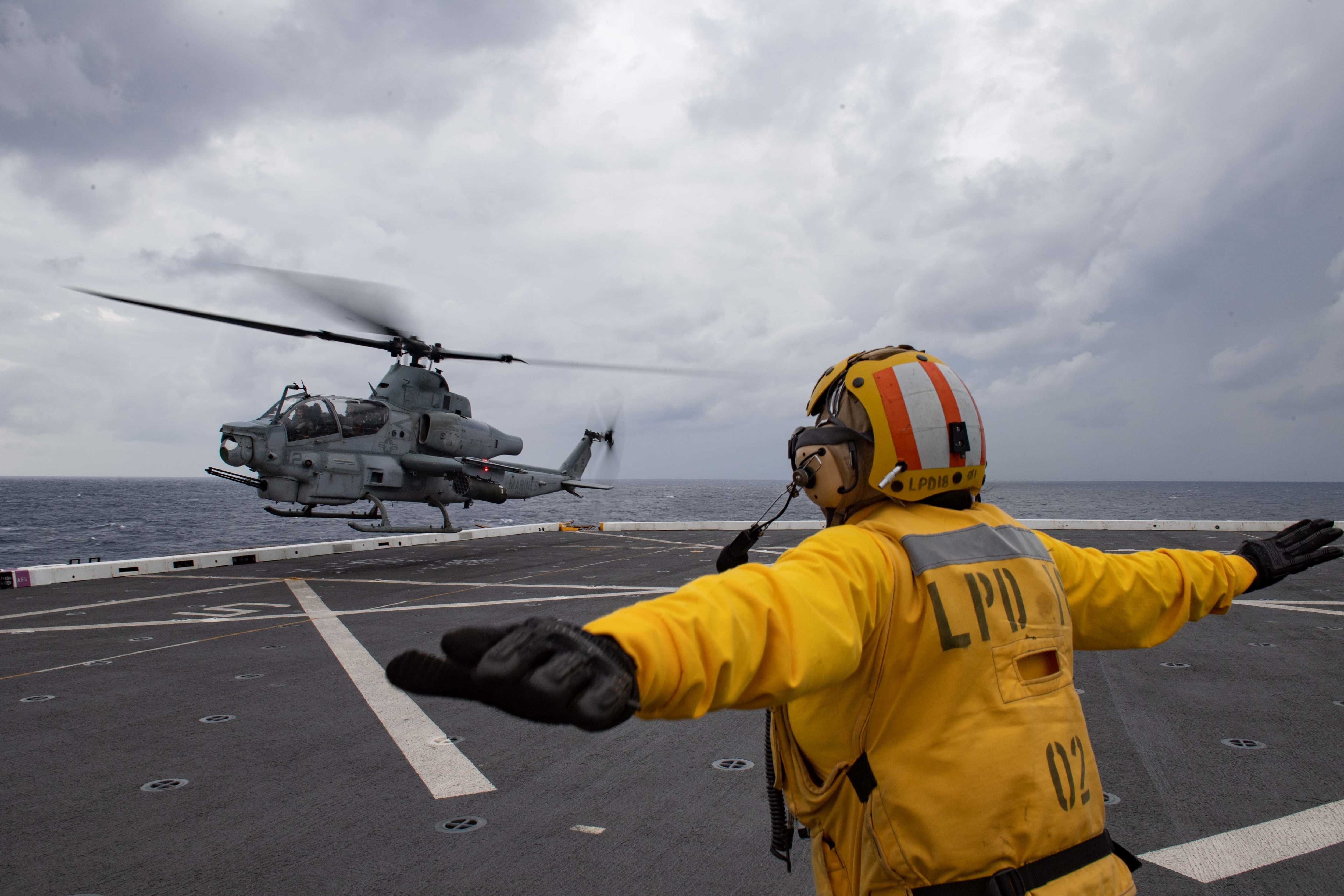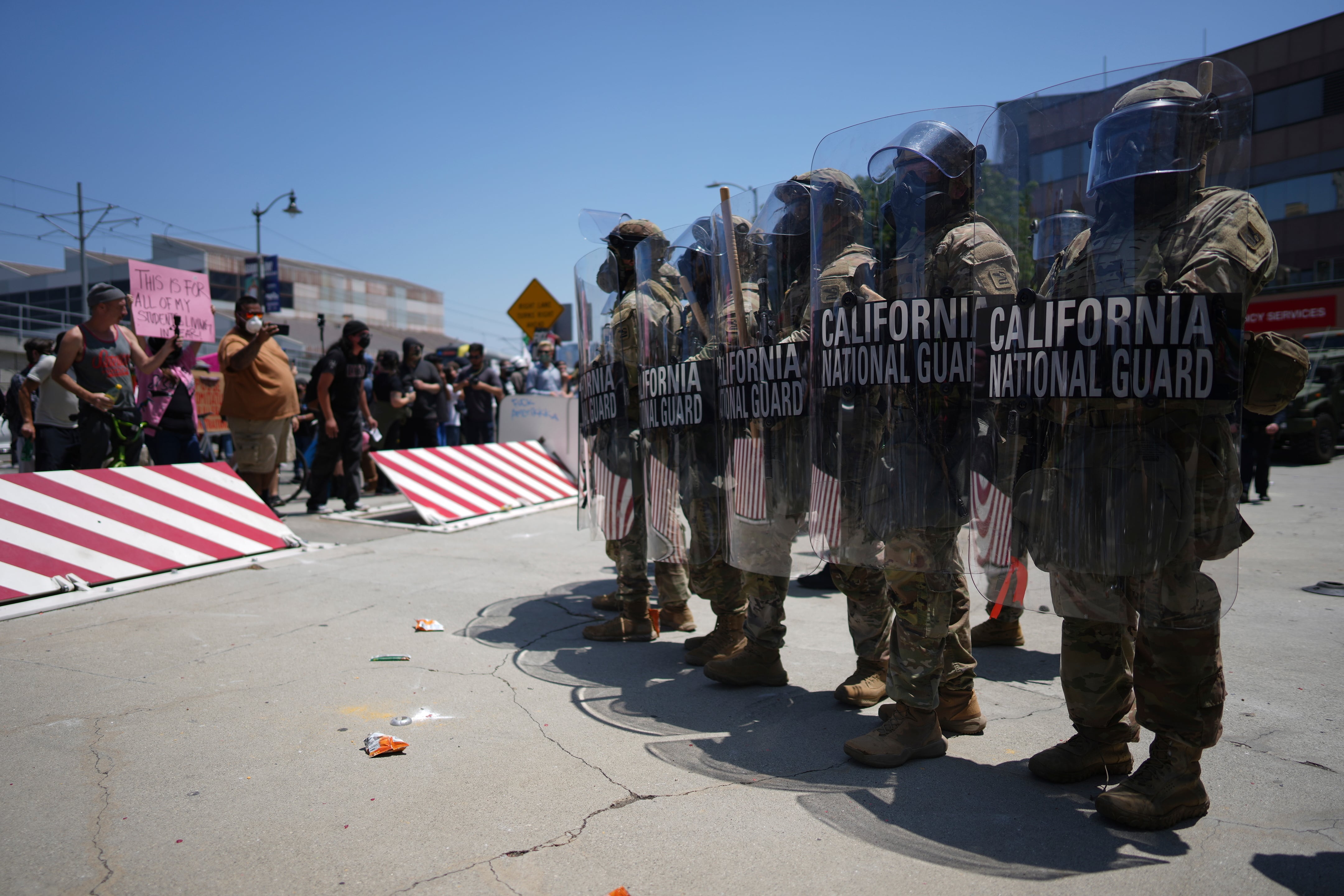WASHINGTON — The Pentagon team leading the charge to reduce the cost of amphibious warships has shown the Marine Corps drawings of scaled-down, less expensive ship designs — but a service general told Defense News he won’t accept them.
During a Tuesday hearing with the Senate Armed Services Committee’s sea power panel, Lt. Gen. Karsten Heckl, the deputy commandant for combat development and integration, told lawmakers he will not change his current requirements.
“The trade space will be my requirements. And I’m the requirements officer for the Marine Corps: I am not coming off the requirement any further,” Hekcl said, amid an effort by the Office of the Secretary of Defense to reduce the cost of building San Antonio-class amphibious transport docks, or LPD.
In the early 2010s, when the Navy was considering replacements for its aging Whidbey Island-class dock landing ships, it settled on an approach to scale down the San Antonio-class LPD design to leverage a hot production line while saving money. That resulted in creating an LPD Flight II design to replace the Whidbey Islands that are today the topic of a debate over decommissionings.
Heckl told senators he’s not willing to take on further reductions.
The general told Defense News after the hearing he has two major concerns with the Pentagon’s suggested designs.
First is that amphibious ready groups — a collection of one amphibious assault ship and two smaller San Antonio or Whidbey Island amphibious ships — hauling Marine expeditionary units typically disaggregate as soon as they deploy to a theater. The Whidbey Island LSDs cannot operate alone, but the LPD Flight II replacements can, making this design a boon for the Corps and the combatant commanders who want flexibility in how they operate ships in theater.
Heckl said the proposed designs take away the ability of this revised LPD to operate independently.
Additionally, he said the flight deck and vehicle cargo storage spaces would be “reduced dramatically.”
He said the Office of the Secretary of Defense offered up “very rough ideas, and I’ve seen, like, three of them not flushed out at all. And none of them are acceptable. The Marine Corps will not accept them.”
He insisted the Corps isn’t being stubborn, noting that the 13th Marine Expeditionary Unit currently in the Pacific region with the Makin Island Amphibious Ready Group includes “a lot of [F-35B jets], a lot of V-22 [tiltrotor aircraft], a lot of [CH-]53 [helicopters], a lot of Zulu [helicopters] and a lot of Yankee [helicopters]. And you can’t do it without an LPD with the rightsized flight deck. That’s why we’re able to do this.”
The Pentagon prompted this reconsideration of the LPD design and cost amid what Chief of Naval Operations Adm. Mike Gilday called a rise in ship costs. The commandant of the Marine Corps, Gen. David Berger, pushed back on that, saying in constant-year dollars — not accounting for inflation — the cost of the ship production line is decreasing.
Twice in recent years Congress asked the Navy to buy its amphibious assault ships and amphibious transport docks, both made exclusively at Ingalls Shipbuilding in Mississippi. Lawmakers argued a multi-ship, multiyear contract would allow the company to save on materials and optimize its workforce.
The Navy has declined to exercise this authority, citing ongoing studies into its requirement for an amphibious fleet. Congress formally passed into law in the fiscal 2023 National Defense Authorization Act a requirement to maintain a fleet of at least 31 amphibious ships.
“They’re trying to reduce cost by reducing my requirement,” Heckl told Defense News. “The answer to reduced cost would have been to exercise on the two previous NDAAs’ [multi-ship procurement authority], one of which was a five-ship and would have saved the American taxpayers almost $900 million.”

During the Senate hearing, Jay Stefany, the acting assistant secretary of the Navy for research, development and acquisition, said: “We’re all in agreement [that] 31 is the requirement. The question is: How do we best get to that requirement?”
Noting that LPDs are purchased every other year and that the Navy bought one in FY23, Stefany said that “there is a period where we can look at a more affordable way, potentially, to build those. We don’t need to build one in ’24; we can take some time to see if there’s a more affordable way to build those before we buy the ‘25 ship.”
Several senators took issue with the need for yet another study on amphibious ships, which the Senate Armed Services Committee, among other panels, previously supported.
In one exchange, Sen. Mazie Hirono, D-Hawaii, noted there had been 11 studies on the amphibious fleet. “What is this — yet another study — going to show that the 11 other studies have not?”
Vice Adm. Scott Conn, the deputy chief of naval operations for warfighting requirements and capabilities, called that a “fair question” and said the Office of the Secretary of Defense “directed it as part of a cost-capability study for the LPDs. … That will inform the [FY25] shipbuilding plan.”
Stefany added that LPDs cost about $1.9 billion and that the team was seeking a way to save money while still meeting the Marine Corps’ needs. He added the study should be complete by this summer.
Heckl said it remains unclear what the future holds since the options thus far are unacceptable to the Corps.
“The Navy won’t toot their own horn; they need a top line increase. We’re dealing with the preeminent threat [in China] directed by two different national defense strategies, and it’s in a maritime domain. And yet we’ve made no adjustments to how we allocate resources to the services,” he said of the Pentagon.
As long as the Navy doesn’t get a greater portion of defense funds — and it has to invest in its top-priority Columbia-class ballistic missile submarine — “I’m going to be a billpayer,” he added.
Megan Eckstein is the naval warfare reporter at Defense News. She has covered military news since 2009, with a focus on U.S. Navy and Marine Corps operations, acquisition programs and budgets. She has reported from four geographic fleets and is happiest when she’s filing stories from a ship. Megan is a University of Maryland alumna.










